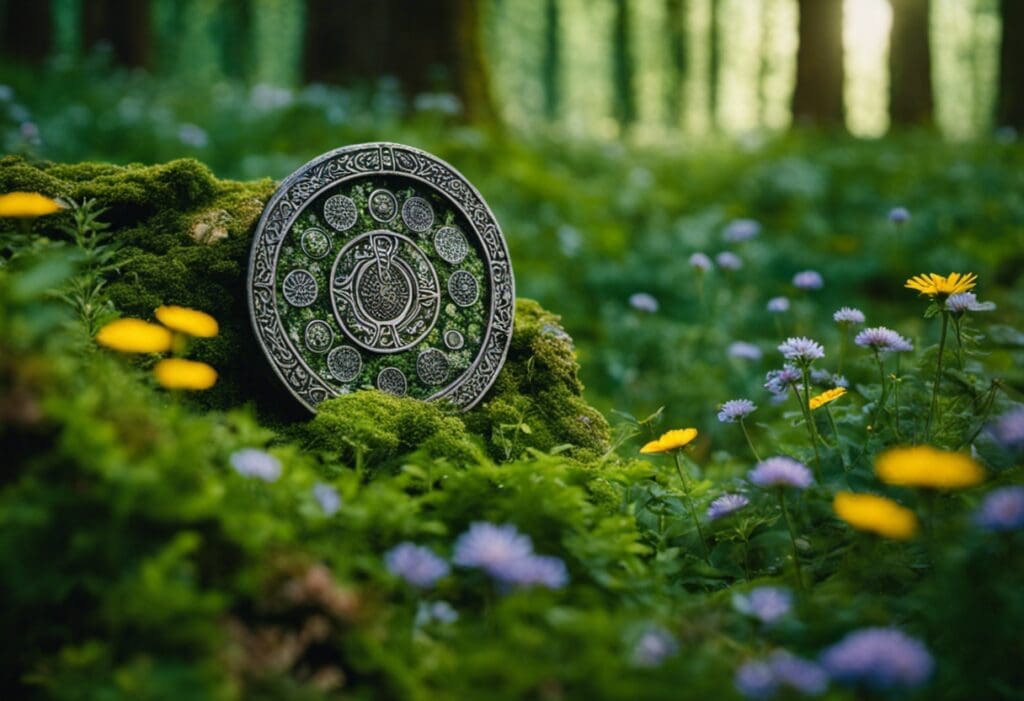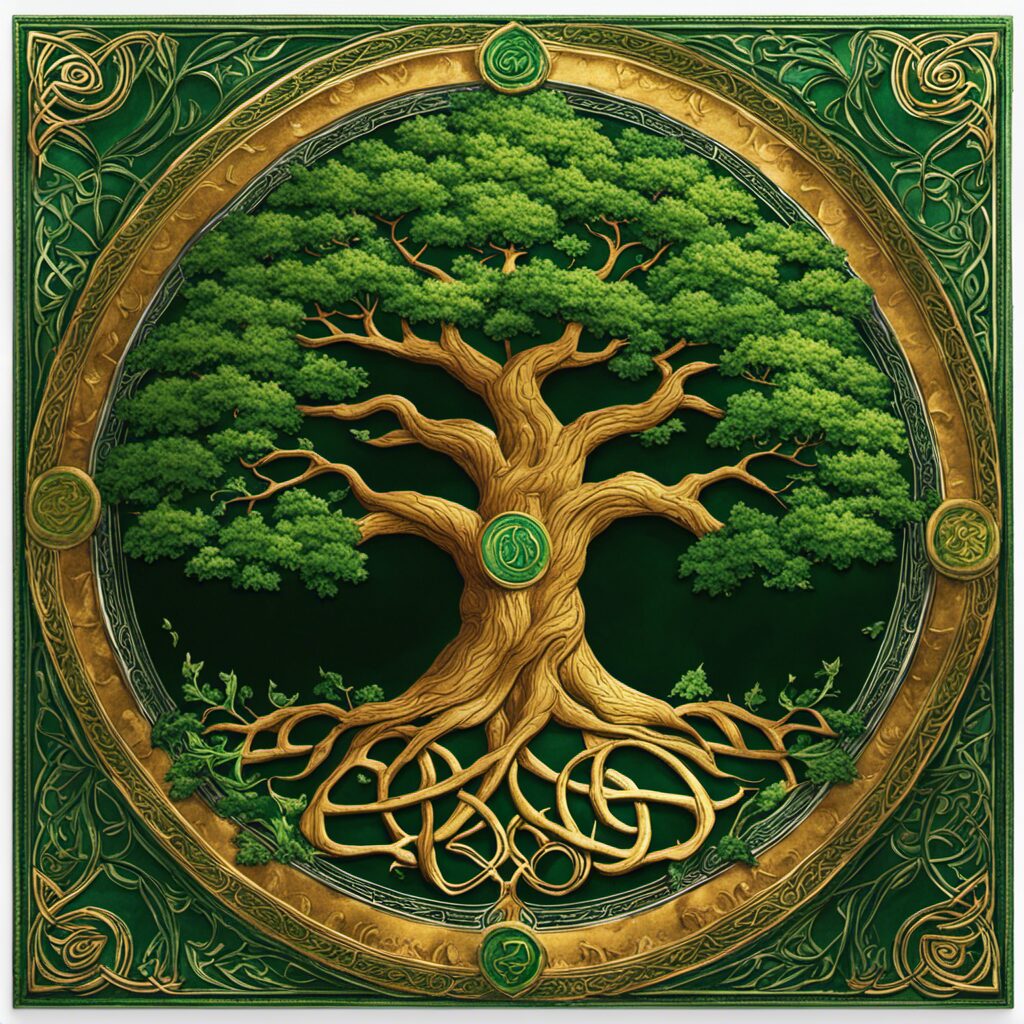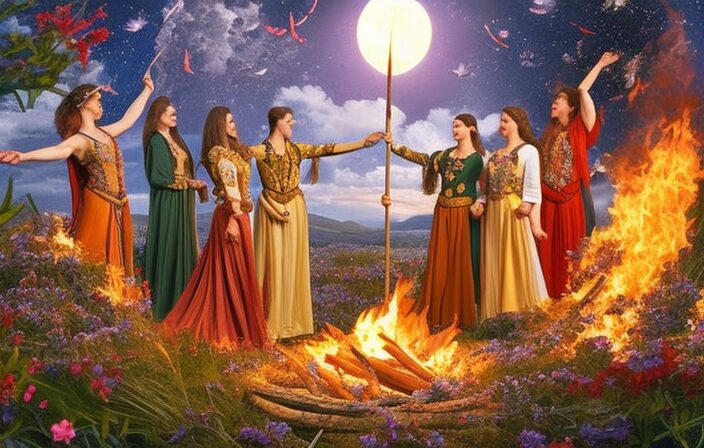The Celtic calendar and herbal medicine have long been intertwined, their connection rooted in the ancient wisdom of the Celts.
This article explores the origins of the Celtic calendar and its significance in understanding the rhythm of nature.
By delving into the key plants and herbs associated with each season, we gain insight into how these natural elements were harnessed for medicinal purposes.
Furthermore, this article investigates the rituals and practices that accompanied Celtic herbal medicine, revealing a holistic approach to healing that honored both physical and spiritual well-being.
Key Takeaways
- The Celtic calendar played a significant role in determining the optimal times for harvesting herbs in Celtic herbal medicine.
- Herbal traditions in Celtic herbal medicine were deeply rooted in spiritual practices, with specific herbs associated with deities or spirits.
- The Celtic calendar and herbal medicine were closely aligned with natural rhythms and celestial movements, with medicinal practices aiming to promote harmony with cosmic energies.
- Rituals and ceremonies were an integral part of Celtic herbal medicine, with the belief that imbuing remedies with intention and spiritual energy enhanced their effectiveness in promoting physical and spiritual well-being.
The Origins of the Celtic Calendar


The origins of the Celtic calendar can be traced back to prehistoric times when ancient Celtic societies developed a system of timekeeping based on the movements of celestial bodies and natural phenomena. The Celtic calendar was deeply rooted in the belief that the cycles of nature and celestial events played a vital role in human life.
Lunar cycles held great importance in this calendar system, as they were seen as markers for agricultural activities, religious rituals, and societal events. The lunar cycle was divided into 29.5 days, with each month beginning on the new moon. This lunar-based approach allowed for better alignment with natural rhythms, such as planting and harvesting crops. The phases of the moon were believed to influence various aspects of life, including fertility, health, and emotional well-being.
In addition to lunar cycles, astrology also played a significant role in shaping the Celtic calendar. Ancient Celts observed the positions and movements of celestial bodies to glean insights into their lives and make predictions about future events. Astrological alignments were considered auspicious or inauspicious for different activities; for example, certain days were deemed favorable for embarking on journeys or conducting ceremonies.
Overall, through its emphasis on lunar cycles and astrology, the Celtic calendar reflected a deep understanding and reverence for nature’s rhythms and cosmic influences on human existence.
The Connection Between the Celtic Calendar and Herbal Medicine


Significant correlations exist between the traditional Celtic timekeeping system and the use of plants for healing purposes. The Celtic calendar, which was based on both lunar and solar cycles, played a crucial role in determining the optimal times for harvesting medicinal herbs. This connection between timekeeping and herbal medicine reflects the deep understanding that the ancient Celts had of nature’s rhythms and their belief in the healing properties of plants.
- The Celtic herbal traditions were deeply rooted in their spiritual practices, with specific herbs being associated with different deities or spirits.
- Many Celtic herbs were believed to possess powerful healing properties, such as yarrow for wounds, chamomile for relaxation, nettle for allergies, and elderberry for boosting immunity.
- The timing of herb gathering was considered vital to maximize their potency. For example, picking herbs during specific phases of the moon or at certain times of the year was believed to enhance their therapeutic effects.
- Traditional healers in Celtic societies possessed extensive knowledge about local plant species and their uses. They passed down this wisdom through oral tradition from one generation to another.
The connection between the Celtic calendar and herbal medicine demonstrates the holistic approach that ancient Celts took towards health and well-being. By aligning themselves with natural cycles and harnessing the healing powers of plants, they sought not only physical remedies but also spiritual harmony with nature.
Understanding the Seasons in the Celtic Calendar


Understanding the seasons in the Celtic calendar involves studying the celestial movements and natural phenomena that were observed by ancient Celts. The importance of herbal medicine in Celtic culture is closely intertwined with their understanding of the seasons. The Celts believed that different plants possessed unique healing properties, and these properties varied depending on the time of year they were harvested.
Astrology played a significant role in the Celtic calendar as well. The ancient Celts believed that celestial bodies influenced both earthly events and human behavior. They observed the movements of the stars, planets, and moon to determine auspicious times for planting, harvesting, and gathering medicinal herbs.
The four major festivals in the Celtic calendar – Imbolc, Beltane, Lughnasadh, and Samhain – marked important seasonal transitions. Each festival was associated with specific agricultural activities and had corresponding medicinal practices. For example, during Imbolc in early February, when winter began to wane and spring approached, healing rituals focused on purifying and revitalizing treatments using herbs like dandelion root or nettle leaf.
By understanding the movements of celestial bodies and natural phenomena throughout the year, ancient Celts were able to harness herbal medicine at its most potent stages. Their belief in astrology allowed them to align their medicinal practices with cosmic energies to maximize their effectiveness.
This holistic approach demonstrates how interconnected nature, astrology, and herbal medicine were within Celtic culture.
Key Plants and Herbs in Celtic Herbal Medicine


Key plants and herbs in the Celtic tradition of herbal medicine are selected based on their unique healing properties and harvested at specific times of the year to maximize their potency. The medicinal properties of Celtic plants have been recognized and utilized for centuries, with traditional uses of herbs in Celtic medicine playing a vital role in promoting health and well-being.
- Nettle: Nettle, known as ‘Urtica dioica’ in Latin, is a highly valued plant in Celtic herbal medicine. It is believed to have diuretic properties and is used to treat conditions such as arthritis, allergies, and urinary tract infections.
- Elder: Elderberry (Sambucus nigra) has long been revered for its antiviral and immune-stimulating qualities. It is often used to alleviate symptoms of colds, flu, and respiratory infections.
- Chamomile: Chamomile (Matricaria chamomilla) is renowned for its calming effects on the nervous system. It is commonly used to relieve anxiety, promote sleep, and soothe digestive issues.
- Yarrow: Yarrow (Achillea millefolium) possesses anti-inflammatory properties that make it useful for treating wounds, reducing fever, and relieving menstrual cramps.
These key plants represent just a fraction of the diverse range of herbs utilized in Celtic herbal medicine. Their traditional uses demonstrate the deep understanding our ancestors had regarding the medicinal properties found within nature’s bounty. By harnessing these natural remedies at specific times throughout the year, the Celts were able to optimize their healing potential.
Rituals and Practices in Celtic Herbal Medicine


Rituals and practices in the Celtic tradition of herbal medicine encompass a range of ceremonial actions and customs that are performed to enhance the efficacy and spiritual connection to medicinal plants. These rituals serve as a means of invoking the healing powers of nature, promoting balance and harmony within individuals and communities.
One common ritual in Celtic herbal medicine is the gathering of herbs during specific times of the year, aligning with the cycles of nature. The Celtic calendar, which includes festivals such as Beltane and Samhain, dictates when certain plants should be collected for their optimal potency. This practice emphasizes the belief that plants possess different energies at various points in their life cycle, influencing their healing properties.
Another important aspect of Celtic herbal medicine is the preparation and administration of remedies. Traditional methods include maceration, infusion, decoction, or poultice application. The process often involves chanting or reciting incantations to imbue the remedy with intention and spiritual energy. Additionally, rituals may involve creating sacred spaces or altars where medicinal plants are honored and offerings are made.
These ceremonial practices not only enhance the effectiveness of Celtic herbal remedies but also foster a deeper connection between humans and nature. They reinforce the belief that traditional healing methods are intertwined with spirituality and respect for natural resources. By engaging in these rituals, practitioners not only seek physical healing but also strive to restore harmony between themselves and the environment around them.
Conclusion
The Celtic calendar, deeply rooted in ancient traditions and beliefs, holds a vital connection to herbal medicine. Each season within this calendar brings forth its own unique energy and qualities, offering an opportunity for the utilization of specific plants and herbs in healing practices.
From the vibrant blossoms of spring to the rich harvests of autumn, the Celtic people held great reverence for these natural cycles. Through their rituals and practices, they engaged with the power of nature’s gifts to restore balance and promote well-being.
By understanding the intricacies of the Celtic calendar and its association with herbal medicine, we can tap into this ancient wisdom and embrace a holistic approach to health.




